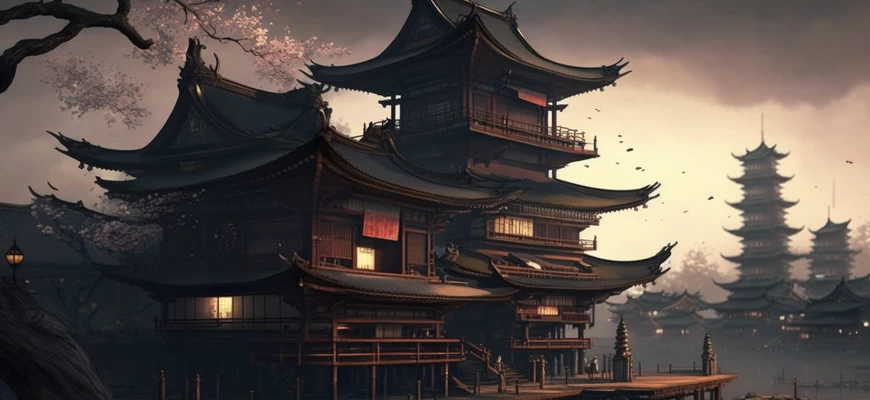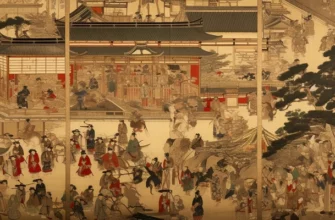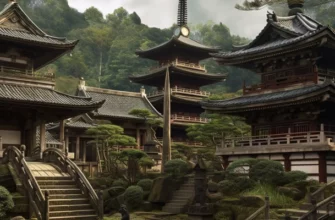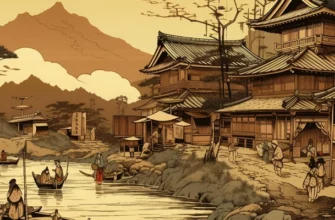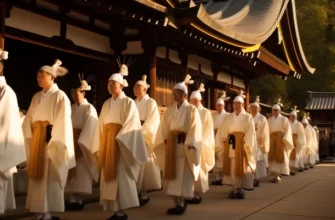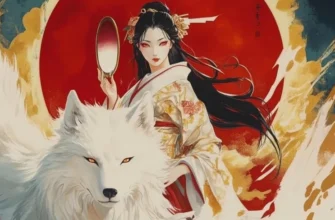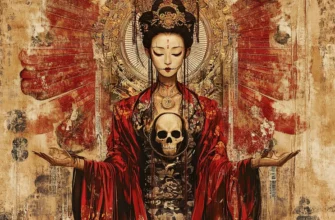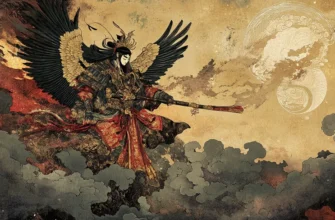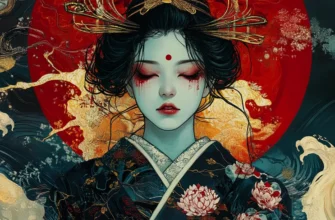Yamato is the historical center of ancient Japan, where a centralized state was formed. The origins of Yamato are linked to the first peoples and the early period of Japan. Over time, political and religious power became concentrated in Yamato, which made it possible to create a system of government and social order. Yamato culture, including religion, art, and architecture, has had a major influence on modern Japan. Today, Yamato is a national symbol and a defining element of Japanese identity.
- History of Yamato
- Indigenous peoples and the early period of Japan
- The creation of Yamato and the formation of a centralized state
- Yamato culture
- Religion and mythology
- Art and architecture
- Politics and wars of Yamato
- System of government and social order
- Wars and foreign relations
- The Legacy of Yamato
- Transition to empire and modern times
- Conclusions. The significance of Yamato for modern Japan.
History of Yamato
Yamato is the historical center of ancient Japan, where a centralized state was formed. The indigenous peoples who inhabited Japan were scattered across the islands and had their own leaders and traditions. During the early period of Japan (7th-3rd centuries BC), the first settlements appeared in the territory of modern Nara Prefecture, where Yamato was later established. According to legend, the first ruler of Yamato, Jimmu, acted as a peacemaker between the chiefs and began to create a centralized state. Later, during the reign of Emperor Suiko, Yamato became the center of state power and religion. It was then that the struggle for power between clans and the creation of a system of government and social order began. The history of Yamato is an important element of Japanese identity and cultural heritage.
Indigenous peoples and the early period of Japan
The indigenous peoples who inhabited the territory of Japan were scattered across the islands and had their own leaders and traditions. The early period of Japan (7th-3rd centuries BC) is characterized by the formation of small principalities scattered throughout the country. According to legend, the first ruler of Yamato, Jimmu, acted as a peacemaker between the chiefs and began to create a centralized state. Later, Yamato became the center of state power and religion, where the political and cultural elite concentrated. Yamato created a system of government and social order that ensured the success of the state. Yamato culture, including religion, art, and architecture, had a great influence on modern Japan.
The creation of Yamato and the formation of a centralized state
Yamato was established in the territory of modern Nara Prefecture, where the first settlements appeared during the early period of Japan (7th-3rd centuries BC). This was the beginning of the formation of a centralized state. The first ruler of Yamato, Jimmu, acted as a peacemaker between the leaders and began to create a system of government that contributed to the establishment of state power. Later, during the reign of Emperor Suijin, Yamato became the center of state power and religion. The cultural and political elites were concentrated in the center of Yamato, which ensured the success of the state. Yamato played an important role in the formation of Japanese identity and cultural heritage.
Yamato culture
Yamato culture has a great influence on modern Japan. This culture was formed in the Yamato region during the formation of a centralized state in early Japan. Shinto, the national religion of Japan, originated here. Art and architecture were also developed in Yamato. One of the most famous architectural structures in Yamato is Hoki Temple, which is listed as a UNESCO World Heritage Site. Traditions and customs that became an integral part of Japanese culture were also formed in Yamato.
Religion and mythology
Religion and mythology played an important role in Yamato culture. The central element of Japan was the Shinto religion, which originated from ancient Japanese beliefs and mythology. Many shrines were built in Yamato, where religious rites and ceremonies were held. Ancient Japanese myths describe the creation of the world and the deities that control natural phenomena. Myths about the Yamato imperial dynasty were also created, reflecting its descent from divine beings. All these beliefs and mythology played an important role in shaping Japanese culture and identity.
Art and architecture
Yamato art and architecture are an important part of ancient Japanese culture. Various art forms developed in Yamato, including painting, sculpture, and ceramics. The most famous artists of the time created paintings and woodblock prints.
In the field of architecture, Yamato made a significant contribution to the development of Japanese architecture as a whole. One of the most famous buildings in Yamato is Hoki Temple, built about 1,400 years ago. This temple is known for its unusual architectural style and decorated wooden columns. In addition, many temples, castles, and other architectural structures were also built in Yamato, which became an integral part of ancient Japanese culture.
Politics and wars of Yamato
Politics and wars were important aspects of Yamato’s history. According to ancient documents, Yamato was founded in the early 3rd century AD and consisted of the eastern provinces of Japan.
In the 5th-6th centuries AD, Yamato began to pursue an active policy of conquering neighboring lands and subjugating local tribes. This led to the growth of Yamato’s influence in the region and the formation of a centralized state.
Throughout its history, Yamato fought numerous wars related to the expansion of its territory and defense against attacks by external enemies. In the 7th century AD, Japan faced a serious threat from the neighboring state of Baekje, which recaptured important lands in northern Japan. Yamato responded to this threat by sending a military expedition, which successfully recaptured the lost territories.
In the 8th century AD, Yamato became one of the most powerful states in the region and took a leading role in the cultural and economic development of Japan.
System of government and social order
Yamato’s system of government and social order were quite complex and developed for their time. The state was ruled by the emperor, who was considered not only a political but also a religious leader.
Yamato’s social order was based on a class system. The upper echelons of society consisted of the emperor, his relatives, and the most influential aristocratic families. The middle class consisted of military and civil servants, while the lower classes consisted of artisans and peasants.
An important part of the social order was also the system of blood ties, which played a significant role in the political and social life of the state. Blood ties were used to form alliances between families and interactions between different classes of society.
Overall, Yamato’s system of government and social order were quite stable and allowed the state to maintain its power and influence for a long time.
Wars and foreign relations
Wars and foreign relations were an important part of Yamato’s history. The state pursued an active foreign policy, entering into alliances and waging wars with other states.
One of the most important wars for Yamato was the war with the state of Koguryo, which lasted more than 30 years. Yamato managed to defeat Koguryo and enter a period of maximum expansion.
The state also maintained diplomatic relations with China and Korea, which influenced Yamato’s culture and religion.
Overall, wars and foreign policy were important factors in Yamato’s development, helping the state maintain its power and influence in the region.
The Legacy of Yamato
After its heyday, the Yamato state gradually lost its position as a result of internal conflicts and external pressure from other states. In 710, a new capital, Nara, was established, ushering in a period of Japanese history known as the Nara period.
Although Yamato no longer exists as a state, its successors, the emperors of Japan, continue to regulate the social and political order in Japan to this day. The cultural and religious traditions that were formed during the Yamato period also continue to exist and influence Japanese society.
Transition to empire and modern times
In 1868, Japan transitioned to a new political system—an imperial monarchy—which officially marked the end of the feudal era and the beginning of the country’s modernization. Yamato, like other ancient Japanese states, became part of the new empire.
Throughout the 20th century, Japan experienced major changes in all areas of life—political, economic, social, and cultural. Despite this, the legacy of the ancient state of Yamato remains an important part of Japan’s cultural identity and continues to inspire the national consciousness of the Japanese people.
Conclusions. The significance of Yamato for modern Japan.
Yamato – Ancient Japan played an important role in the formation of modern Japan, becoming the first centralized state in the country’s history. The culture, art, religion, and politics of Yamato influenced the further development of Japanese identity and traditions.
Today, the legacy of Yamato continues to inspire the Japanese to preserve their national traditions and culture. This demonstrates the importance of preserving cultural heritage and its role in shaping national identity.
